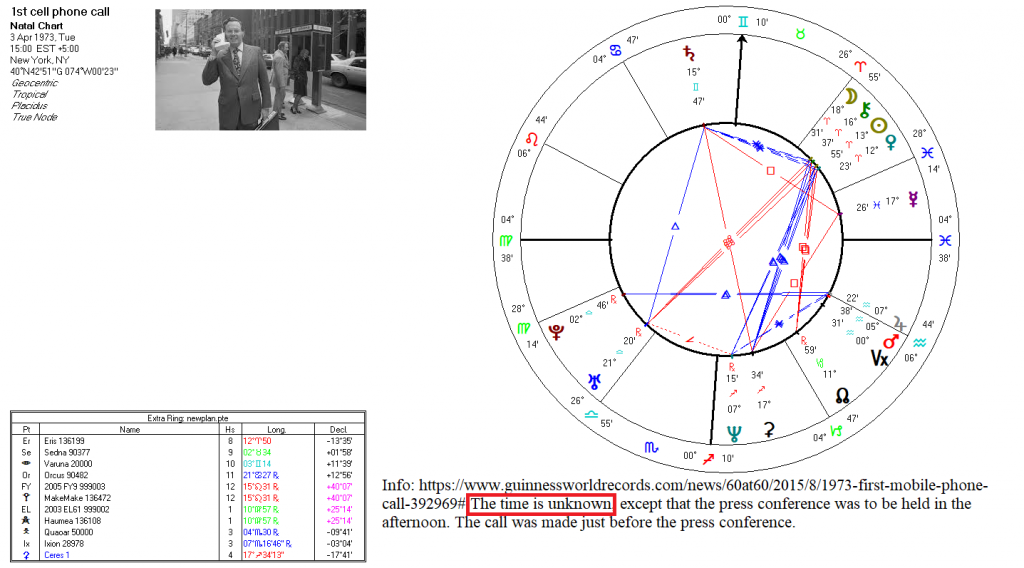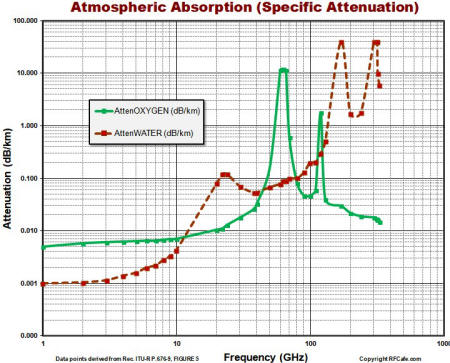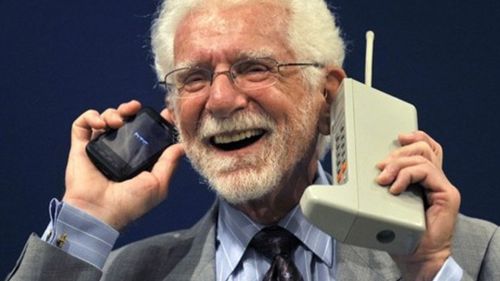Be afraid…very afraid of 5G! Or so we are told by our dystopian fans. It is part of a plot for world domination. It is also part of a plot for long-term depopulation efforts, to be used in conjunction with vaccines containing heavy metals that will turn us into antennae and…well, cause any number of side effects and will be the first step in us all being absorbed into the Borg. It is even the cause of the COVID pandemic. Didn’t you know that? That’s a pretty amazing plan, one might say. Or it all may just be a bunch of bunk and scaremongering by a fringe element or well-meaning but misinformed people who want to thwart any sort of technological progress. What is the truth, then? Well, we’ll begin to unravel part of that here and begin to separate truth from fiction when it comes to 5G technology.
We’ll start here with my background, which involved an education in physics and a subsequent career with experience in all sorts of technologies, from materials to computer systems in machinery. I have also had a particular interest in radio for much of my life. You might call me a jack of all trades and master of some. Does that make me an expert in some field? I don’t claim to be, but I do have a great curiosity about such matters as tech, which leads me to investigate these in some depth. This piece represents my own findings on the matter of 5G, since it concerns quite a few people. It will do nothing to convert believers and disbelievers, but it may also allay some fears for people with more open minds. We’ll start with mobile phones.
Conspiracy and fearmongering about mobile phones has been with us since the beginning, all the way back to when some of the first ones were rolled out in 1989 by Motorola. The first call on a public, commercial mobile phone was made by Martin “Marty” Cooper on the afternoon of 3 Apr 1973. That’s the legend, anyway. The chart, with a mid-afternoon time, is below (bigger):

The time posted on the chart is arbitrary and meant only to show an afternoon event. There has been no attempt (or probably any need at this point) to rectify it. That chart here is not really the main topic, though we can say a few points about it.
The Sun was in Aries at that phone call, indicating a new initiative and a pioneering effort, which it was. The call was made on a ‘brick’, a.k.a. a DynaTAC prototype, which weighed in at just over a kilo. This was in the days when we didn’t have the types of chips that we now see universally. The phone operated in the FM band. The call itself was an epic troll, directed to Marty’s rival at the time in AT&T/Bell Labs:
Motorola called a press conference at the Hilton Midtown Hotel in New York on the afternoon of April 3 1973 to unveil the project. However, prior to the event, Cooper decided to dazzle one particularly sceptical journalist by showing the portable handset in action on the streets of Manhattan.
The reporter watched in astonishment as Cooper dialled the number of his chief competitor Dr. Joel S. Engel, the then head of Bell Labs.
Recounting in a 2011 interview the history making chat, Martin told the BBC: “I said ‘Joel, this is Marty. I’m calling you from a cellphone, a real, handheld, portable cellphone.’ There was a silence at the other end. I suspect he was grinding his teeth”
The troll factor is shown in the chart by the Mercury/Saturn square, along with that day being a moon wobble. The daring of the event (which it was, as it was untried technology in the public sphere), is shown by the Mars/Jupiter conjunction, trine to Pluto and sextile to Neptune. The newness of the tech was shown by the new moon with Venus in Aries, all sextile to Saturn. The success of the tech itself was shown by the Saturn trine to Uranus. It was, in fact, a pioneering event that broke the mold of the old phone/radio tech that had existed up to that time, shown in the chart by the new moon stellium opposite Uranus. And, if the event took place between 3 and 5 in the afternoon, that puts Gemini on the MC, perfect for such an event. That said, thus far, I have not been able to find a time for that first call.
The first commercially available cell phones were rolled out in 1984, with the Motorola DynaTAC 8000X. It operated on a 1G analog system. We then had the successive rollout of the ‘G’ systems, as follows:
- 1G: 1979, in Japan. Analog
- 2G: 1991, Finland. Digital (all systems are digital afterward as of 2G)
- 3G: 2001, Japan. Digital
- 4G: 1998, Norway and Sweden
- 5G: Being rolled out now. Conceived in 2012, rollout began 2019. China is the leader this time.
- 6G: in development (Yes, it is.) Expected rollout in the 2030s. Frequency range: 140 – 230 GHz. This is in the Terahertz range. Will depend on new technologies for chips.
Now we get to the crux of this article, as to why there is so much opposition by some people toward this advancing tech, and what the truth actually is regarding the supposed dangers of 5G. We start with outlining what the main points of attack against 5G are:
- It caused the COVID crisis (This is just patent nonsense. 5G does not create or simulate viruses, for reasons to become clear below.)
- It is being set up to enable a massive security state, Big Brother in every corner of the globe. And we are not talking about the inane TV show.
- It will be used to depopulate the world in conjunction with vaccines. (Ditto, re: the 1st bullet point.)
Much of the argument against 5G relates to frequencies and security matters. We’ll focus mostly on the frequencies here. The most commonly cited frequency by the naysayers when discussing 5G is 60 GHz (60 billion cycles per second). The reason this is rolled out as an argument against this tech? – it supposedly deprives the user of oxygen. The following graph shows the relationship between the atmosphere and radio frequencies (bigger):

There are several factors to note in the graph. Firstly, the higher the peaks are on the graph, the greater is the loss of signal strength over distance. There are two lines, one representing signal loss due to water vapor (red line) and the other the signal loss due to atmospheric gases, notably oxygen (green line). The 22 GHz water vapor attenuation (loss of signal strength) is never mentioned in the scare pieces about 5G. The big one that is being used to scare people is the 60 GHz bandwidth, which actually spans a range of roughly 57 – 64 GHz.
These frequencies are not in general usage for 5G, for the simple reason that the very atmosphere itself interferes with its transmission. To reiterate the point and make it clear:
60 GHz will not be used for your average 5G signals because the atmosphere blocks its transmission.
60 GHz signals do not penetrate the skin. The power levels used are very low (on the order of microwatts), highly directional and cannot deprive you of oxygen. It would take much higher power levels to produce the sorts of dire effects on people that the scare pieces on 5G describe.
There is a caveat to the statement. 60GHz will not be used for atmospheric transmission, as in direct to your cell phone or likely from mobile phone towers. But it can be used, in a few exceptional cases, as in between satellites (In space no one can hear you scream. There’s no oxygen to carry the sound.), in fiber-optic cables (no oxygen there, either) and in a narrow beam over very short distances – typically between the tops of skyscrapers, flat open spaces or between high topographic points.
60 GHz cannot be transmitted through buildings, or through trees, or through people. It needs a clear, unobstructed path to be of any wide usage. The latter application would be used for reasons of high security and where super-high bandwidth is needed. But even then, there are physical reasons not to use 60 GHz signals transmitted through the air, precisely due to atmospheric conditions. And, to produce any sort of physical effects on a person, the power level would have to be on the order of tens-of-thousands of watts, power levels not used in telephony.
As to the other applications for 60 GHz use in 5G, the 60 GHz between satellites cannot reach the surface of the Earth, and even there it must be beamed in a fashion similar to lasers between the satellites. The primary use of 60 GHz in open air would be military. The average range of a 60 GHz signal is around 1.7 km, or about a mile. The typical beam must be extremely narrow over distances of a mile, especially as one would encounter in space. This brings up another point.
There is a direct inverse relation between the width of a transmitted signal and its frequency. The higher the frequency, the narrower the transmission beam. Mobile phone frequencies are typically line-of-sight (directional and narrow, and cannot be transmitted around hills). One can always spot a 5G tower because it must have multiple antennae to disperse the signal over a wide area, for the reason just stated. That is the only reason for having such a high number of antennae. It is not to boost signal strength, but rather, to disperse it more evenly, and in 360° fashion. This is the sort of thing we will see in urban areas.
A big deal has been made about microwaves, too, when it comes to mobile phones. The term ‘microwave’ is also actually a misnomer. A true ‘micro-wave’ as in a frequency having a bandwidth on the order of millionths of a meter, lies above frequencies greater than 300 GHz. Mobile phones are actually millimetre-wave devices. But phone techs used the term ‘microwave’ early on to distinguish the frequencies being used from ordinary broadcast-band (radio and TV) transmissions. It was an unfortunate choice of a term, because it was immediately seized upon as one of the arguments against mobile phones – that they would ‘fry your brain’ – likening a phone to a microwave oven. A natural question, then, is at what frequency do microwave ovens actually operate?
Your typical microwave oven at home operates at a power level of between 600 – 1200 watts, at a frequency of around 2.4 GHz. If that frequency rings a bell, it is a typical processor speed for a laptop computer. It is also a radar frequency, hence the old name for said ovens being ‘radar ranges’. In comparison, the maximum power output from a mobile/cell phone is 3 watts, and often less than a watt. Due to battery size, the number of operating apps on a phone and the distance from the base station (phone tower), the output must be kept low. That is also the same reason we see phone towers every kilometre or so.
Given the preceding, will a mobile phone fry your brain? No, although speaking on one for hours at a time is not generally considered to be conducive to good health. And most mobile phones operate at frequencies in the high-megahertz (MHz) range. So, here are handset frequencies for the various Gs (generations) of cell phones:
- 3G: 850 MHz – 2.1 GHz
- 4G: 600 MHz – 2.5 GHz
- 5G: 700 MHz – 5 GHz
- 6G: unknown, but probably not too much different from 5G
Why, then, has there been all the hype about 5G, when the frequencies being used at the ground level (handsets) are not even usually even a 20th of the 60 GHz range? It has a historical precedent, going all the way back to 1989. The following might explain a bit of it:
When the 1800 MHz frequency [1.8 GHz] was first introduced for mobile use in 1989, it led to a health scare. Radio engineers had slipped into the habit of calling these frequencies “microwaves”. It was not a big mental leap to associate “microwave frequencies” with “microwave ovens”. Some scientists questioned whether enough was known about the health effects of using “microwaves” for mobile phones. The media did the rest, leading to the alarmist headline: “mobile phones fry your brains”. In 2015 the fanfare about new higher (28 GHz) frequencies everywhere caught the eye of some scientists, who questioned whether enough was known about the health effects of using such higher frequencies for mobiles. Social media did the rest, leading to one scientist suggesting that 5G will lead to the human race becoming extinct within seven generations…arguably an advance on having one’s brain’s fried immediately. It provided fertile ground for pranksters to spread the Covid hoax. This has lent an excuse to an anarchist fringe to vandalise base stations in the UK – oblivious to the fact that nobody in the UK is using higher frequencies anywhere for their 5G services. There have been similar problems in other countries. To see so many people in the UK protesting against something that doesn’t exist has the potential for a riveting sequel to the 2015 book “The 5G Myth”.
Well, there are some valid points made in the aforementioned book, in that most people will see little difference or benefit in 5G. If not, then why roll it out? It is being rolled out because of big data transfer, which has military and industrial applications. It will relieve data transfer congestion in urban areas. In fact, its main benefit will be to urban areas, where the number of devices connected to the internet increases rapidly by the day. And this is one thing that has people concerned, because some of those devices are things like surveillance cameras, traffic sensors, cars and the like. Cars are increasingly becoming part of the ‘internet of things’. Some people look at that sort of scenario and think to themselves that can only mean increased surveillance, and in a way it does for more unscrupulous individuals and governments. On the other hand it opens many possibilities for betterment of services and infrastructure. What are the effects, if any, on health with 5G, then?
The frequencies to be used in 5G handsets – where 5G meets the person, in a manner of speaking – have been in use for decades now. The US FDA has the following to say on the matter:
The weight of nearly 30 years of scientific evidence has not linked exposure to radio frequency energy from use of cell phones to health problems, such as cancer…The FDA also monitors and analyzes public health data on cancer rates in the U.S. population. The data clearly demonstrate no widespread rise in brain and other nervous system cancers in the last 30 years despite the enormous increase in cell phone use during this period. In fact, the rate of brain and other nervous system cancers diagnosed in United States has decreased for the last 15 years or so.
To readers who are convinced there is a link between cell phones and the frequencies used therein and disease, no amount of scientific evidence will convince you. Science doubt and denial is all the vogue in portions of the populace these days. In light of that, we turn instead to common sense and observation over time.
Here is an inconvenient fact for anyone who is saying 5G is dangerous to people’s health and that it will allegedly cause long-term damage: There are now more mobile phones than people on this planet. We have been using them for a few decades now and people are not dropping dead or showing any major signs of decline or illness that are not attributable to other factors, like diet and lifestyle. We use the same frequencies for our microwave ovens and home computers. We’re still here. Try and live without a cell phone or computer these days. It just makes no sense to think that 5G is somehow going to fundamentally bring an end to our way of life as we have known it.
There is one last item on the menu when it comes to frequencies. We know now that 60 GHz is not a factor in normal usage or deployment of 5G. But there are other frequencies being rolled out, notably 28 GHz in high-density areas of data transfer, largely in urban centers. 28 GHz has no interaction with oxygen or with moisture in the atmosphere. Along with this, the type of energy emitted from phone is non-ionizing, meaning it is not radioactive and thus does not react with tissue and disrupt body functions. However, millimetre waves can cause local heating of tissue with long exposure, especially in the eyes and skin. But such effects at the levels of mobile phone use are negligible. And, the higher the frequencies go, the less the radio signal can penetrate into the body. However, there is a glaring hole in what is being talked about here.
We have looked at the handset frequencies for the various generations, yet most of the concerns about mobile phone use focus on those higher frequencies, from 28 GHz upwards. If we only use a few GHz for a handset, where would these other frequencies be used, if at all? Currently the economic realities are saying no to these higher frequencies. But because the higher frequencies are line-of-sight and offer wide bandwidth, they would be used to beam transmission between base stations. Those signals, whatever their frequency, are then stepped down to the frequency of the handsets. The higher frequencies can also be transmitted via fiber-optics, which produces no electromagnetic radiation. So, the main frequencies to which we would be subjected with 5G by and large would be those to which we are exposed now. And, it is more efficient to use cables to transmit a clear signal between base stations than it is to try to transmit through the air, which can be difficult on rainy days.
From the preceding, even though it is more technical and not astrological, we might perhaps have a better glimpse at what is being installed under our noses, but also a better idea of what to expect and what we can set aside as far as concerns.
The simple truth is that if one doesn’t want to live exposed to higher levels of radio waves of any frequency, the best bet is to live outside of urban areas and to limit the number of devices that transmit such signals in one’s home. Also, it is a better idea to use an ear set when speaking on a phone or to use speaker mode if possible than to have the phone up to one’s ear. This is all just common sense.
I have had people sending me all sorts of pieces about 5G since the pandemic started, which has given me pause to look into the matter in some depth. There has been precious little factual discussion in what I have been sent. Our current mobile phone tech does not cause disease. Just look around. 5G phones will be no different, except in the way they process data. The frequencies used will essentially be the same as those of our old phones. If you want to get away from those types of ‘microwave’ devices, you will need to throw out your computers, microwave ovens and phones. Get an old-style handset with a cable, if you can. Welcome back to the ‘good ‘ol days’. Or, we can have more informed conversations about these matters.
Marty Cooper would be proud to see his ideas and tech so widely used. He saw his work as a great service to humanity, and it has been. It has given us a freedom and ability to communicate with each other in a way we could not have until 30 years ago. That little smart phone we have now gives us the ability to stay in contact with anyone anywhere in the world, regulations permitting, at any time of day, instantly. When I was child, that was just a dream. That was his dream, and he has seen it realized. He was born on Boxing Day 91 years ago. He even has a law named after him, ‘Cooper’s Law’, the Law of Spectral Efficiency: The law states that the maximum number of voice conversations or equivalent data transactions that can be conducted in all of the useful radio spectrum over a given area doubles every 30 months.
Good on ya’ Marty. We do love your tech, naysayers aside. My family in the US has said many times how great it is that they are able to have video calls with me in Italy whenever we like. For me, I don’t have any fears about 5G. And FYI, I put the phone on speaker whenever I can. If you want good health, live a healthy lifestyle. Eat well, and love more. And please stop sending me articles about ‘the dangers of 5G’. I fully expect the hoo-hah around it to stop in a few years – and not because we will all be dead!
Featured pic from SDSU Library

